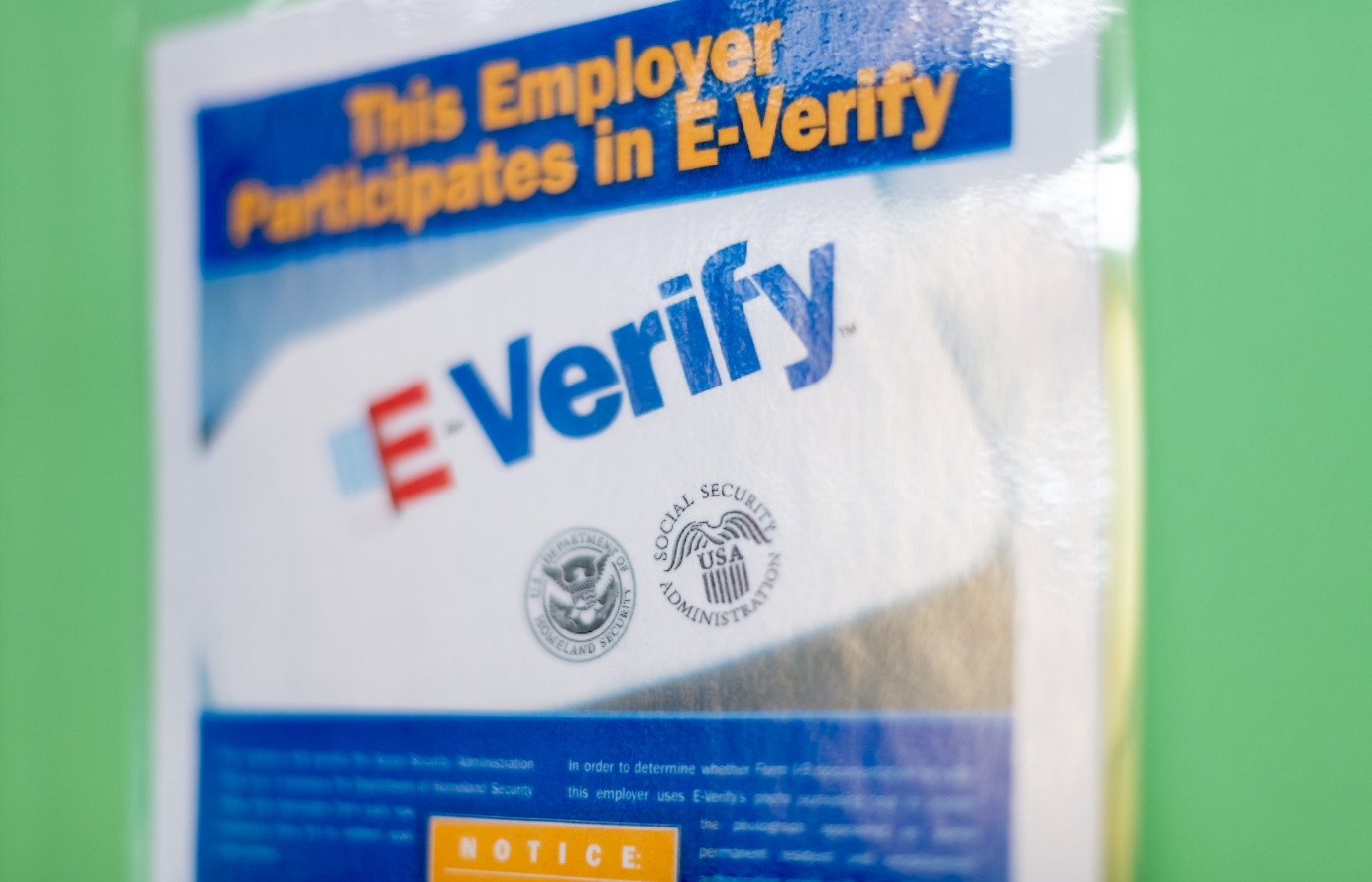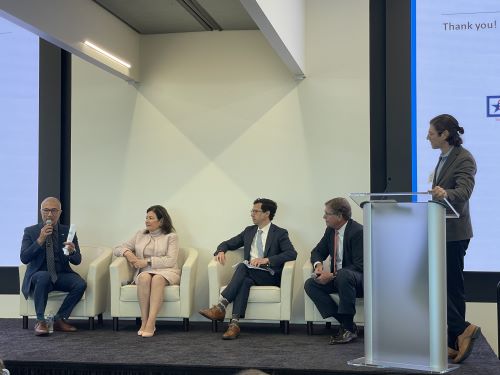The Fiscal Case for a Clean DREAM Act
 Responding to President Trump’s cancellation of the Deferred Action for Childhood Arrivals (DACA) program, Congress is moving toward a compromise that could legalize the DREAMers in combination with more immigration enforcement and cutting legal immigration through the RAISE Act. This blog estimates the fiscal effects of these policies. The following estimates are based on the 75-year NPV estimates (3 percent discount rate) of immigrants and their descendants for all levels of government as calculated in table 8-14 in the National Academy of Sciences (NAS) report on the economic and fiscal impact of immigration. Legalizing the DREAMers reduces deficits while more enforcement and the RAISE Act increases them.
Responding to President Trump’s cancellation of the Deferred Action for Childhood Arrivals (DACA) program, Congress is moving toward a compromise that could legalize the DREAMers in combination with more immigration enforcement and cutting legal immigration through the RAISE Act. This blog estimates the fiscal effects of these policies. The following estimates are based on the 75-year NPV estimates (3 percent discount rate) of immigrants and their descendants for all levels of government as calculated in table 8-14 in the National Academy of Sciences (NAS) report on the economic and fiscal impact of immigration. Legalizing the DREAMers reduces deficits while more enforcement and the RAISE Act increases them.
Table 1 displays my results in two ways: “Current Base” and “Base Zero.” The “Current Base” column shows the fiscal effects with a base of the current fiscal effect with “No DREAM & No DACA (Current).” The “Base Zero” column shows the fiscal effects of the various policies relative to a base of zero whereby the “No DREAM & No DACA (Current)” is set to zero and the fiscal effects are displayed relative to zero. “Base Zero” is a clearer estimate of how these policies will affect deficits relative to the current policy “No DREAM & No DACA (Current).” The “Current Base” column provides a frame of reference. The cost of the border wall, mandatory E-Verify, and the RAISE Act start at “Base Zero” in both columns because they are currently not in effect.
There are about 2.3 million DREAMers and their current fiscal NPV is +$497 billion (Table 1, Current Base). That means that they and their descendants will pay that much more in taxes than they will receive in benefits over the next 75 years. That number is positive because the DREAMers arrived at a young age. Under a clean DREAM Act that legalizes all DREAMers without any educational standards, the fiscal NPV of deficits improves by $117 billion (Table 1, Base Zero). Legalizing all of the former 700,000 DACA recipients increases net revenue by a net $35 billion up to $532 billion (Table 1).
In contrast, immigration enforcement policies have a large and negative fiscal impact on budgets. Immigration enforcement is expensive to run, increases regulatory costs, and lowers economic output that then diminishes tax revenue. The cost of building and maintaining a border wall is $74 billion, the regulatory cost of mandatory E-Verify is $89 billion, and the RAISE Act would cost $2.3 trillion in net-foregone revenue. Deporting 700,000 DREAMers will diminish future tax revenue by $158 billion, including the cost of $12,500 per deportation.
The preferred and more politically realistic policy combination for many immigration restrictionists is to legalize the 700,000 DACA kids in exchange for a border wall, mandatory universal E-Verify for all new hires, and the RAISE Act. That deal would increase 75-year deficits by a present value of $2.4 trillion from the current base of zero. These findings are similar to those of my colleague Ike Brannon but presented over a different time horizon according to the NAS methods.

Findings
This section estimates the fiscal impact of the various immigration proposals above except for the RAISE Act and the border wall. A previous fiscal analysis of the RAISE Act and another co-authored analysis on the cost of constructing the border wallfilled those gaps. The RAISE Act will diminish net tax revenue by $2.3 trillion while the cost of building and maintaining the border wall is $74 billion. This blog estimates all costs over 75-years and annually discounts them by 3 percent.
The DREAM Act, Legalize 700,000 DACA Kids, and No DREAM or DACA
The findings in this section come from applying the estimated age-of-arrival and eventual education level of DREAMers to table 8-14 in the NAS report on the economic and fiscal impact of immigration. The more educated and younger the immigrant is, the more positive his fiscal impact. The NPV fiscal estimate in Table 8-14 is positive for immigrants who arrive between ages 0 and 24. All DREAMers must have entered the United States before their 16th birthday so they are fiscally positive according to the NAS.
The next step was estimating the eventual level of education for DREAMers using the American Community Survey based on a residual statistical technique. Next, I assumed that all DREAMers under the age of 25 would eventually be as educated as those aged 25 years or older, which likely undercounts their eventual education level and, hence, their net-contribution to the federal budget. For each of the legalization scenarios, I assumed that unlawful immigrants consumed 35.7 percent fewer benefits and paid 10 percent lower taxes than other workers of the same age until 35 years old, based on estimates from Figure 8-21 of the NAS.
Allowing DREAMers to live and work unlawfully in the United States under the current policy nets the Treasury $497,360,916,811 in revenue over the next 75 years (Table 1, Current Base). Legalizing the 700,000 former DACA kids increases that net-revenue by about $35 billion to $532,445,793,820 (Table 1, Current Base and Base Zero). The deficit shrinks because the taxes they pay immediately go up but their consumption of social services is still small as I assumed an average legalization age of 35. Legalizing all of the DREAMers regardless of education boosts net tax revenue by $117 billion (Table 1, Base Zero) to $614,332,743,970 (Table 1, Current Policy).
E-Verify
E-Verify is a government program whereby employers can check their newly hired employee’s identity information against a series of government databases. E-Verify is supposed to identify unlawful immigrants and exclude them from employment. This program is not mandatory nationwide but several states have mandated it for all new hires with disappointing results. Many immigration restrictionists portray E-Verify as a silver bullet solution to preventing unlawful immigration. The costs from state E-Verify mandates are in addition to the 13.48 million hours a year that employers spend filling out I-9 forms.
E-Verify will cost the economy about $5.8 billion in lost productivity in its first year, based on government methods for calculating the burden of I-9 forms. This estimate is biased in favor of E-Verify as it doesn’t include the vast and difficult to predict economic costs of additional workplace regulations to other portions of the economy and complementary American workers. The Congressional Budget Office estimates that E-Verify will cost the government an average of $3 billion per year to operate for its first ten years, including lost revenue. Thus, mandatory E-Verify will increase federal deficits by $89 billion in present value (Table 1).
Much of that decline in federal tax revenue will come from unlawful immigrants working off the books and other labor market inefficiencies that will not result in many Americans seeking jobs destroyed freed up by E-Verify. However, the inefficiencies of E-Verify may lower the cost of the program substantially as there are many ways to cheat it and they’d likely multiply after a mandate becomes law.
Legalize DACA Kids, Build the Wall, E-Verify, and Pass the RAISE Act
A combination of these policies is simply the addition of the fiscal impacts described in Table 1 (Base Zero) that produces a fiscal NPV of -$2.4 trillion in increased deficits, relative to current policy, over the next 75 years. That cost is overwhelmingly due to the RAISE Act’s slashing of future tax revenue. The realist restrictionist-preferred policy of legalizing the 700,000 DACA kids in exchange for a border wall, mandatory E-Verify, and the RAISE Act would crash federal tax revenues because the last three policies would lower economic growth.
Deport DACA Kids, Build the Wall, Mandate E-Verify, and Pass the RAISE Act
This combination of policies would diminish federal tax revenue by a net $2.6 trillionin NPV terms (Table 1, Base Zero). This type of proposal is likely off the legislative table but it shows how destructive immigration restrictionism and enforcement really are. Federal outlays increase under most of these policies but the real tax revenue killer comes from their uniformly negative impact on economic growth. A smaller economy cannot pay more taxes, all else being equal. Immigration enforcement and restrictionism are so expensive because they lower economic growth by deporting laborers, entrepreneurs, investors, and consumers who, due to their age of arrival, have a net-positive impact on federal revenues. In short, the major cost of these policies is their impact on economic growth and not the upfront price tag of implementing them.
Conclusion
Building a wall, enacting the RAISE Act, and mandating E-Verify would increase deficits over the next 75 years. The DREAM Act or legalizing the DACA children would have a small positive impact because they are already here. Legalized DREAMers would eventually have access to more means-tested welfare benefits but their young age of entry, education level, a boost in tax revenue from legalization, and the fact that they would gain access to these benefits at an older age minimizes the fiscal impact. The alternative of deporting them is especially costly.
Originally published in the Cato Institute blog. Research by Michelangelo Landgrave was indispensable in writing this blog post.








